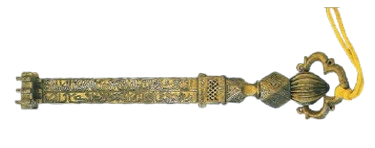
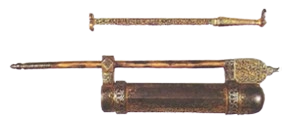
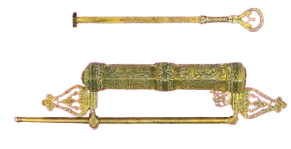
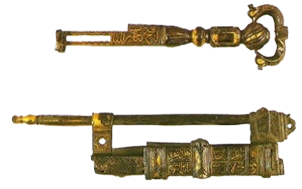
When we examine the historical records regarding the locks and keys of the Ka’bah from the Abbasid, Mamluk, and Ottoman eras, we find that the caliphs and sultans of these periods would send locks and keys to be used for securing and opening the Ka’bah’s door, especially during renovations or on other special occasions. However, these keys were not merely tools for locking and unlocking; they also symbolized care, devotion, and deep reverence for everything related to the Sacred House of Allah.
A researcher conducted a study on the locks and keys preserved in the Topkapi Museum in Istanbul, analyzing their various designs. She stated that the oldest lock found dates back to the early Abbasid era, made of wood, designed like a bridge, and inscribed with engravings inlaid with tin and lead wires.
Later, in the Abbasid era, locks and keys were crafted from iron. The inscriptions on these locks and keys were made using gold or silver inlay (tahkfit technique).
In the Mamluk era, the locks and keys received even greater attention in their craftsmanship. They were adorned with intricate calligraphic decorations and silver inlays, showcasing the exceptional skill of craftsmen in executing letters and designs during that time.
In the Ottoman era, the first Ottoman sultan to send a lock for the Ka’bah—before the Ottomans assumed the caliphate—was Sultan Bayezid II. The Topkapi Museum collection includes two locks from his era, both made of iron, with gold-inlaid inscriptions containing Quranic verses, the sultan’s name, and the craftsman’s name.
The last lock and key of the Ka’bah’s door from the Ottoman period was commissioned by Sultan Abdul Hamid Khan in 1309 AH.
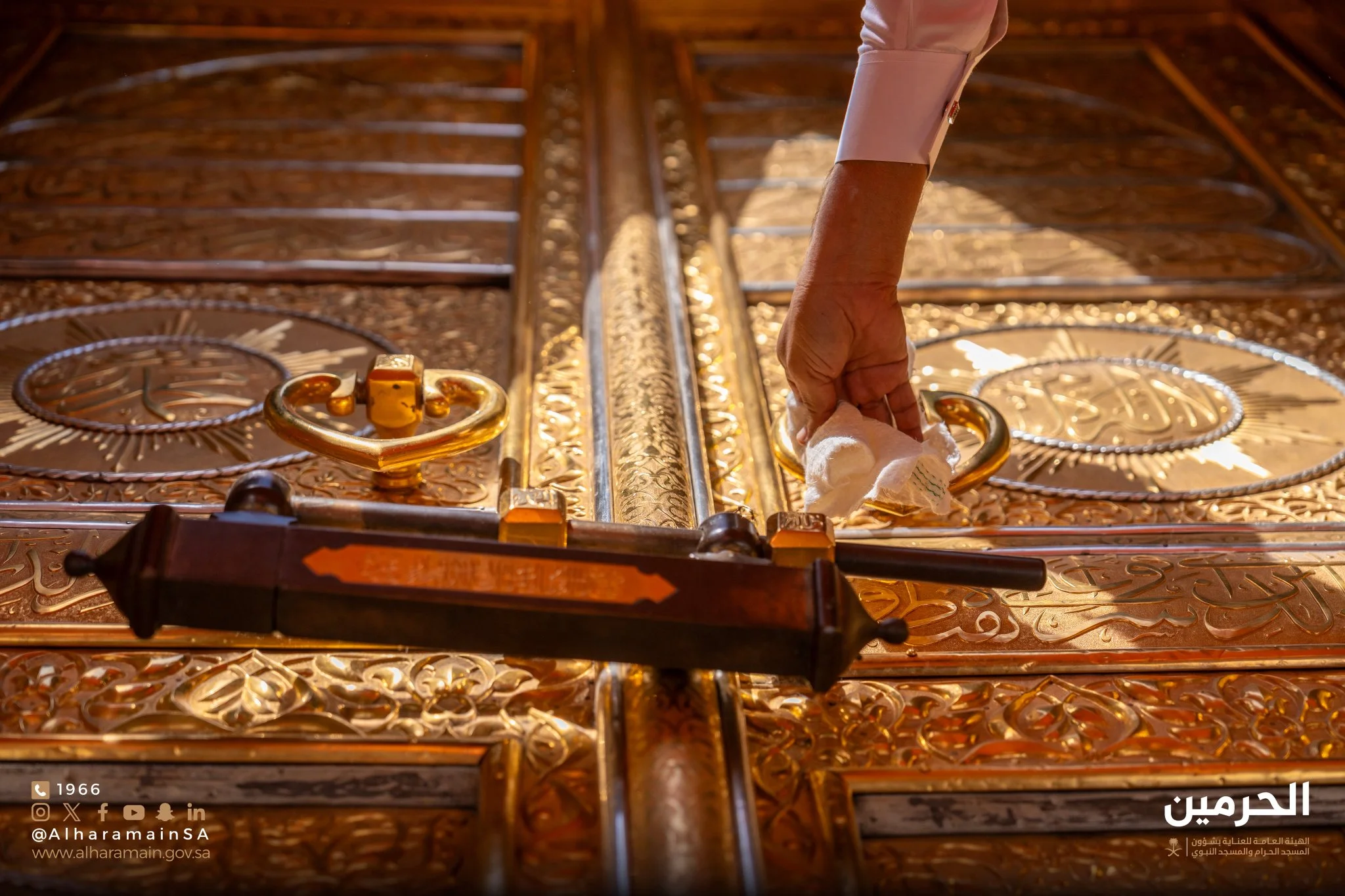
This lock and key remained on the Ka’bah’s door until the Saudi era, when they were replaced during the reign of King Khalid bin Abdul Aziz Al Saud, may Allah have mercy on him, in 1398 AH, along with the replacement of the door.
King Khalid bin Abdul Aziz, may Allah have mercy on him, ordered the replacement of the old door of the Noble Ka’bah with a new one, along with a new lock and key, which are currently in use.